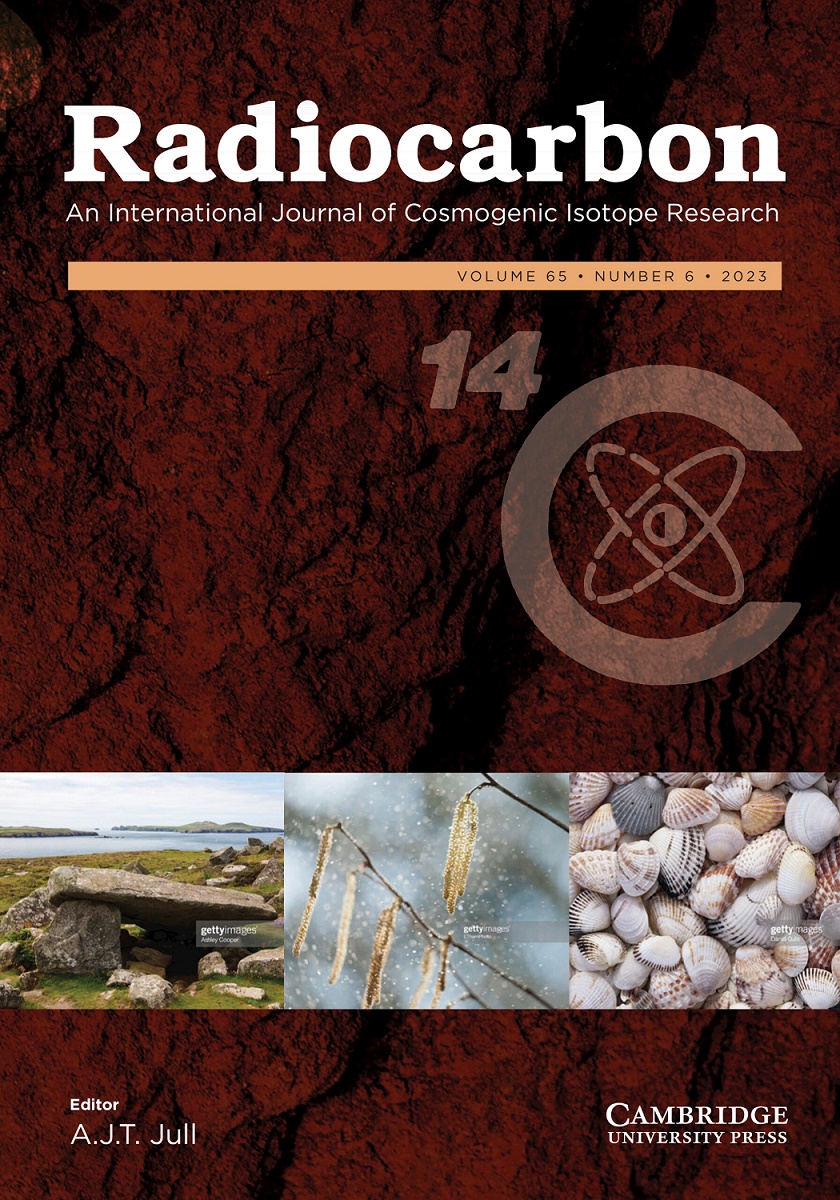开发一种跨学科方法,对来自阿卢拉古镇(沙特阿拉伯)的土砂浆进行放射性碳定年。建筑考古、灰泥分析和放射性碳测定的整合
IF 1.3
3区 地球科学
Q2 GEOCHEMISTRY & GEOPHYSICS
引用次数: 0
摘要
本文讨论了用于确定沙特阿拉伯王国(西亚)西北部 AlUla 老城废弃遗址历史发展的最相关编年信息的方法。这种方法的基础是使用放射性碳方法对土灰泥样本和土层进行年代测定,以确定一些建筑物的建造顺序,进而确定遗址的年代演变。从该镇北部和南部地区的六座建筑和结构的灰泥样本和土层中仔细提取了 11 份有机材料样本(即木炭和植物纤维)。在对建筑物和地下结构进行初步考古分析的基础上,根据地层相关性和保护条件选择了建筑物和土层。通过对灰泥进行实验室分析,确定了灰泥中无机成分的特征,并分离出有机材料,用于放射性碳测年。加速器质谱(AMS)实验室的研究结果提供了老城马穆鲁克王朝晚期/奥斯曼帝国早期(即公元 15-17 世纪)建筑阶段的证据,而直到最近,人们才对这一阶段有了部分了解。此外,研究结果还确定了奥斯曼时期(即公元 17-19 世纪)和奥斯曼晚期(即公元 19-20 世纪),前者代表了奥斯曼帝国结束对该地区的占领之前的最新干预。本文章由计算机程序翻译,如有差异,请以英文原文为准。
Development of an Interdisciplinary Approach to the Radiocarbon Dating of Earth Mortars from Alula Old Town (Saudi Arabia). Integration of Building Archaeology, Mortar Analysis and Radiocarbon Dating
This paper discusses the approach used to identify the most relevant chronological information on the historic development of the abandoned site of AlUla Old Town, in the northwest of the Kingdom of Saudi Arabia (Western Asia). The approach is based on the use of the radiocarbon method to date earth mortars samples and soil layers used to create the constructive sequence of some buildings and, in turn, the chronological evolution of the site. Eleven samples of organic material (i.e., charcoal and vegetable fibers) were carefully removed from mortar samples and soil levels from six buildings and structures in the northern and southern areas of the town. Buildings and soil layers were chosen for their stratigraphic relevance and conservation conditions, based on an initial archaeological analysis of both, buildings and underground structures. Laboratory-based mortar analysis led to the characterization of the mortar’s inorganic fraction, and to the isolation of the organic material for the radiocarbon dating. Results from the accelerator mass spectrometry (AMS) laboratory provides evidence of a Late Mamluk/Early Ottoman constructive phase (i.e., 15th–17th c. AD) of the Old Town that was only partially known until very recently. Furthermore, the results allowed the identification of an Ottoman phase (i.e., 17th–19th c. AD) during which most of the buildings and structures were rebuilt, and of a Late Ottoman phase (i.e., 19th–20th c. AD) representing the most recent interventions before the end of the Ottoman occupation of the area.
求助全文
通过发布文献求助,成功后即可免费获取论文全文。
去求助
来源期刊

Radiocarbon
地学-地球化学与地球物理
CiteScore
16.20
自引率
6.00%
发文量
85
审稿时长
6-12 weeks
期刊介绍:
Radiocarbon serves as the leading international journal for technical and interpretive articles, date lists, and advancements in 14C and other radioisotopes relevant to archaeological, geophysical, oceanographic, and related dating methods. Established in 1959, it has published numerous seminal works and hosts the triennial International Radiocarbon Conference proceedings. The journal also features occasional special issues. Submissions encompass regular articles such as research reports, technical descriptions, and date lists, along with comments, letters to the editor, book reviews, and laboratory lists.
 求助内容:
求助内容: 应助结果提醒方式:
应助结果提醒方式:


